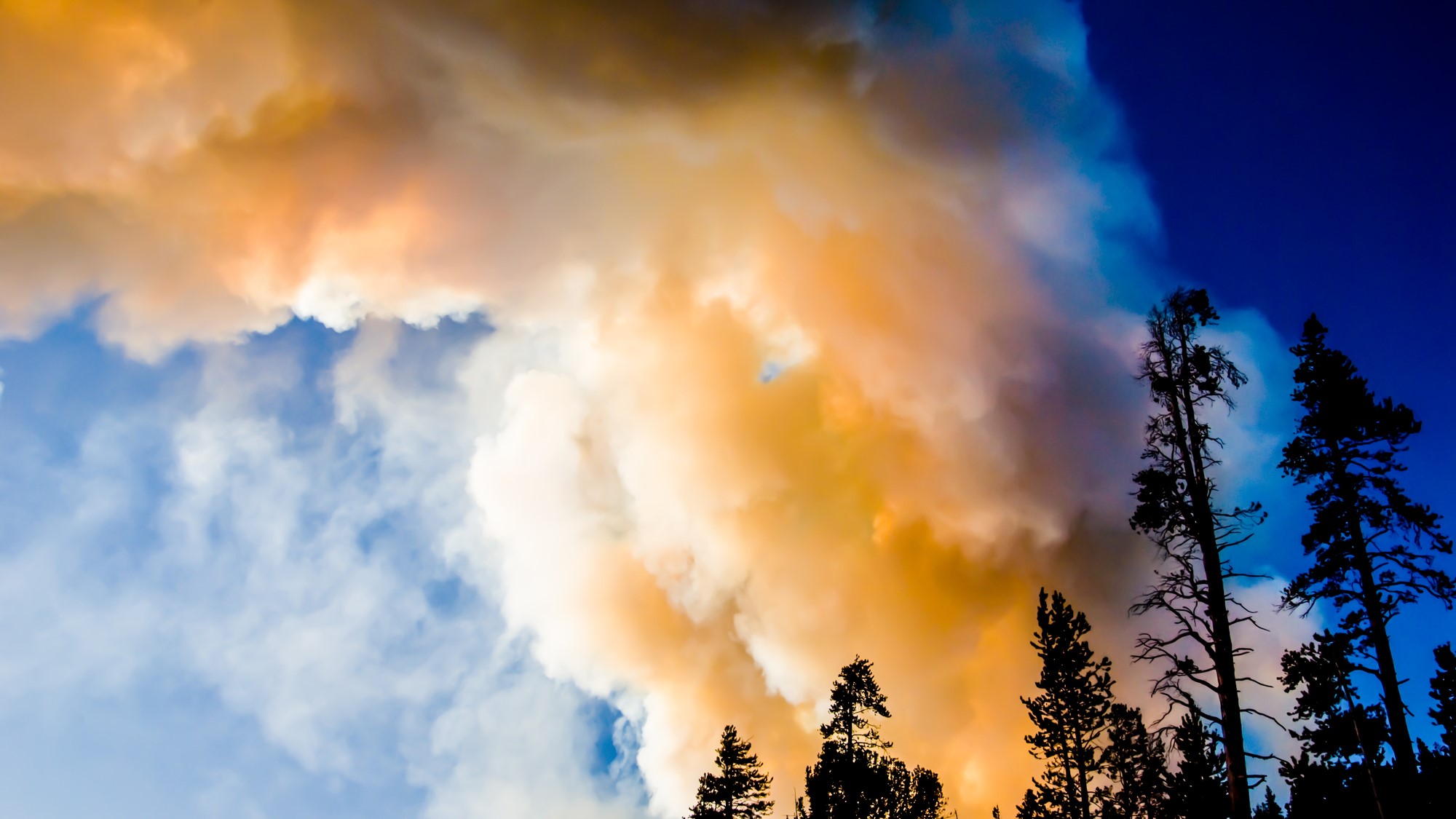

Climate change is worsening wildfires. Increases in drought, air temperature, and lightning cause hotter, drier, and longer fire seasons. By 2100, the number of wildfires is projected to spike worldwide by up to 50 percent. What’s more, fires exacerbate global warming when they burn peatlands, rainforests, and other carbon-rich ecosystems. As a result, huge amounts of carbon dioxide are released into the atmosphere, creating a fiery feedback loop.
Aside from releasing large quantities of greenhouse gasses, wildfires also emit various climate pollutants. Wildfire smoke often contains particulate matter that can be broadly categorized into black carbon and organic carbon, says Nishit Shetty, postdoctoral associate at the Virginia Tech Department of Civil & Environmental Engineering. In a study published recently in Nature Geoscience, Shetty and his co-authors have identified a class of organic carbon that has potent warming effects but is often missing from climate models: dark brown carbon.
“‘Dark brown carbon’ is a term we coined for a subset of brown carbon aerosols we discovered in wildfires across the western US,” says Shetty. “While it absorbs less light than black carbon on a per-particle basis, it is about four times more abundant than black carbon in these plumes, which makes it an important contributor to short-term climate forcing.”
[Related: Clouds of wildfire smoke are toxic to humans and animals alike]
Black carbon, which is formed during high-temperature flaming combustion, is typically responsible for the darker part of wildfire smoke. Meanwhile, organic carbon particles, arising from cooler smoldering, make up lighter plumes. “An easy way to visualize this would be to see how smoke from a flaming campfire is different from that of a smoldering charcoal barbecue,” says Shetty.
They play different roles in changing the climate. Black carbon absorbs solar radiation at all wavelengths, which means it can warm the atmosphere and even accelerate melting in the Arctic. In contrast, organic carbon “primarily scatters light with little to no visible light absorption,” says Shetty, which is why it’s thought to contribute to global cooling. There’s also a class of organic carbon called brown carbon that absorbs ultraviolet and visible solar radiation. It tends to have a yellowish-brown appearance when collected on quartz-fiber filters, he adds.
Typically, climatologists emphasize black carbon’s warming effect over organic carbon. Sunlight can bleach light-absorbing organic aerosols such as brown carbon, causing it to lose its ability to absorb solar radiation. However, when Shetty and his co-authors sampled ground and airborne smoke from large-scale wildfires in the western United States, they observed strong light absorption from particles in biomass-burning smoke. This wasn’t black carbon, but something similar: they’d discovered dark brown carbon particles.
[Related: Biofuel is a ‘renewable’ resource, but climate change could soon limit its potential]
According to the study, dark brown carbon can absorb strongly across the visible and near-infrared wavelengths, which means it may also have the potential to warm the atmosphere. It also resists the photochemical bleaching that makes light-absorbing organic aerosols lose their ability to absorb solar radiation.
Because these particles do not evaporate easily and have low solubility, previous efforts to measure organic carbon absorption likely missed them, says Shetty. These findings demonstrate that climate models must also consider the warming effect of dark brown carbon in wildfire smoke. Otherwise, the global warming impacts of wildfires may be grossly underestimated, subsequently affecting climate change mitigation efforts around the globe.
As wildfires increase in number around the world due to climate change, it becomes more crucial to understand how to mitigate its environmental impacts. “Increasing temperatures and decreasing humidity due to anthropogenic climate change are creating conditions that lead to increased severity of wildfires,” says Shetty, “so it is becoming increasingly important to know what these smoke plumes are made of to better estimate their effect on our atmosphere.”
